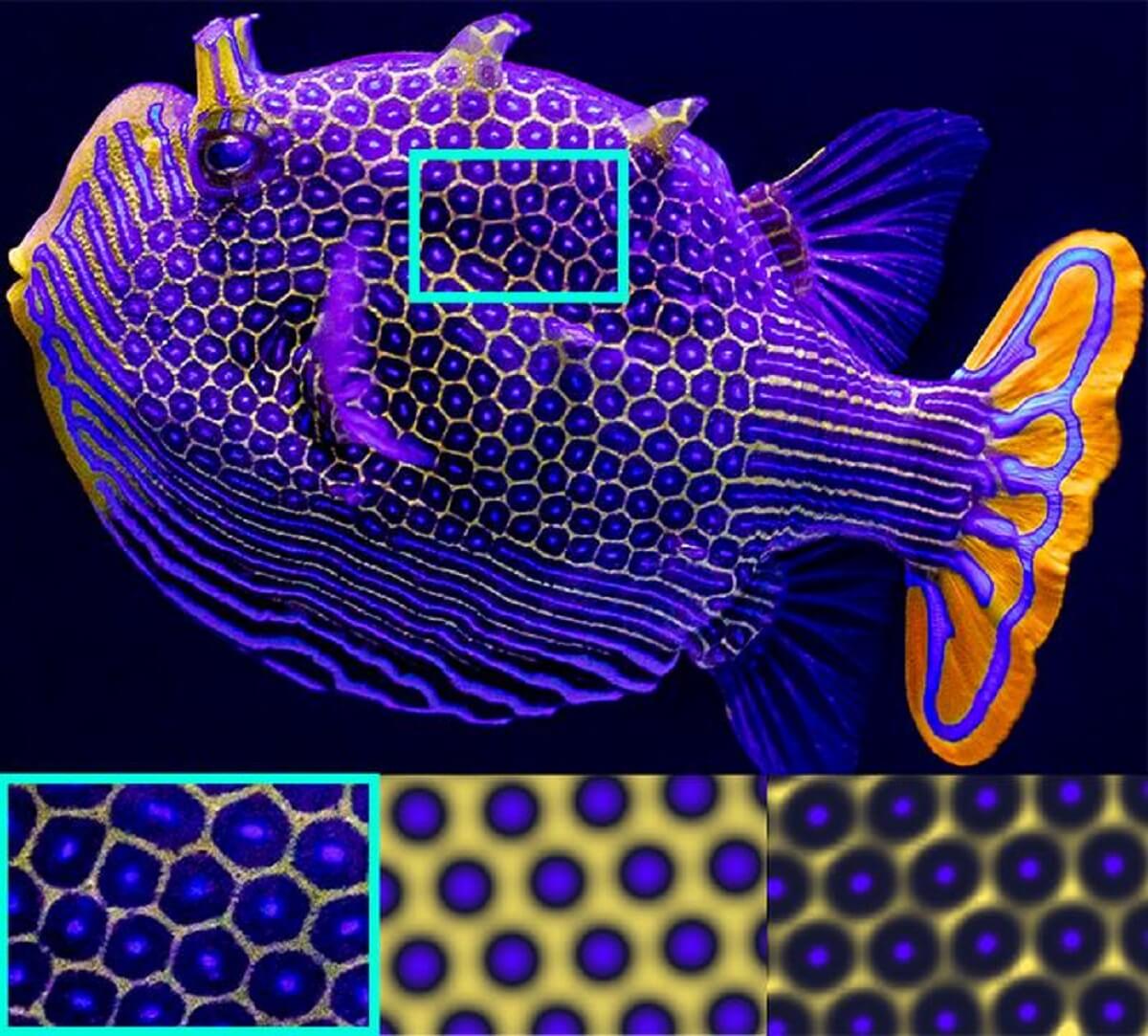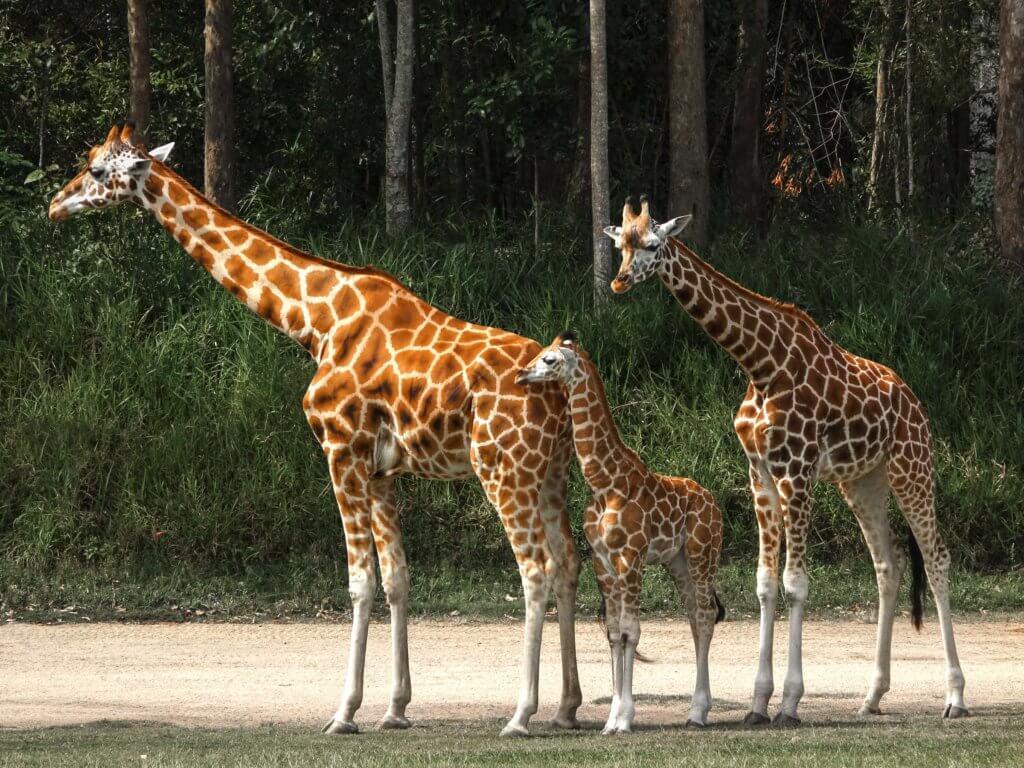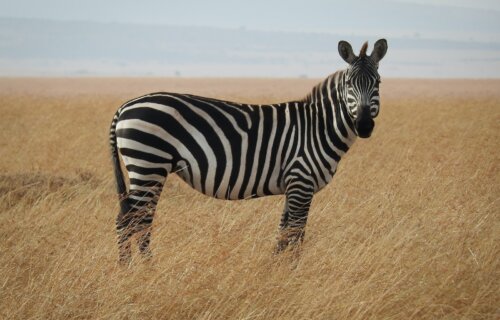BOULDER, Colo. — The age-old question about the origins of leopards’ spots and zebras’ stripes may finally have an answer. Nature’s repertoire includes a variety of distinct patterns among animals, marine life, and vegetation. Now, engineers suggest that the same physical principles involved in laundry cleaning might contribute to the vibrant spots and stripes of tropical fish.
The University of Colorado Boulder’s team relied on the pioneering work of Alan Turing, the mathematician who invented modern computing over 70 years ago, for their research. The new findings might pave the way for the creation of novel materials and pharmaceuticals.
Turing, who tragically ended his life at 41 in 1954, is now recognized as the progenitor of theoretical computer science and artificial intelligence, a tribute reflected on the new £50 banknote in the United Kingdom.
“Many biological questions are fundamentally the same question: How do organisms develop complicated patterns and shapes when everything starts off from a spherical clump of cells?” says the study’s lead author, Benjamin Alessio, an undergraduate researcher in the Department of Chemical and Biological Engineering, in a media release. “Our work uses a simple physical and chemical mechanism to explain a complicated biological phenomenon.”

Previous biological research indicates that many animals developed patterned coats for camouflage or mate attraction. While genetic information dictates elements like the color of a leopard’s spots, genetics alone doesn’t clarify the precise location of these spots’ emergence.
In 1952, preceding the discovery of DNA’s double helix, Turing introduced a revolutionary theory explaining animal patterning. He theorized that as tissues grow, they release chemical substances. These chemicals spread through the tissue, akin to mixing milk into coffee, with some reacting to create spots and others inhibiting this reaction, thereby spacing the spots out.
Turing suggested that rather than intricate genetic operations, a basic reaction-diffusion model could account for fundamental biological patterning.
“Surely Turing’s mechanism can produce patterns, but diffusion doesn’t yield sharp patterns,” explains corresponding author Dr. Ankur Gupta.
Upon visiting the Birch Aquarium in San Diego, Mr. Alessio was struck by the boxfish’s crisp patterning — a purple dot encased in a hexagonal yellow border with thick black intervals. He conjectured that Turing’s theory was insufficient to explain the hexagons’ sharp perimeters. Yet, the patterns resemble the outcomes of his computer simulations where particles form sharply defined bands.
The researchers hypothesize that diffusiophoresis — a process where molecules move through a fluid due to concentration gradients, influencing other molecules’ movements — could be a factor in natural pattern development. This concept, though esoteric, is akin to the cleansing action in laundry washing. Research indicates that rinsing soapy garments in pure water expedites dirt removal compared to a soapy water rinse, due to the soap molecules’ movement drawing out the dirt.
The simulations by Dr. Gupta and Mr. Alessio demonstrate that molecular movement during diffusiophoresis follows a definite path, resulting in sharply defined patterns.

In testing this theory against the boxfish’s skin pattern, they modified Turing’s equations to include diffusiophoresis. The revised model yielded images strikingly akin to the fish’s vivid, sharply contoured bi-color hexagons.
The theory suggests that as chemical agents spread through tissue as Turing described, they also carry pigment cells via diffusiophoresis, much like soap removing dirt, resulting in crisply outlined spots and stripes.
Turing’s theory has since been applied to explain various biological patterns, such as hair follicle arrangement in mice and palate ridges in mammals. The ongoing research could enhance our understanding of patterning, potentially influencing the development of innovative materials and medications.
“Our findings emphasize diffusiophoresis may have been underappreciated in the field of pattern formation. This work not only has the potential for applications in the fields of engineering and materials science but also opens up the opportunity to investigate the role of diffusiophoresis in biological processes, such as embryo formation and tumor formation,” concludes Dr. Gupta.
The study is published in the journal Science Advances.
You might also be interested in:
- Why do zebras have stripes? To keep the horseflies away
- Ever notice white spots on monarch butterfly wings? Turns out they’re key to migration success
- What Are The World’s Most Dangerous Animals?
South West News Service Stephen Beech contributed to this report.

